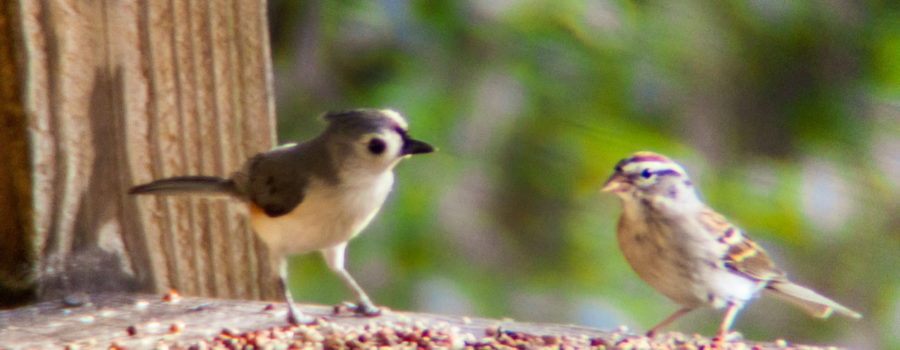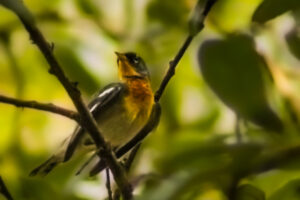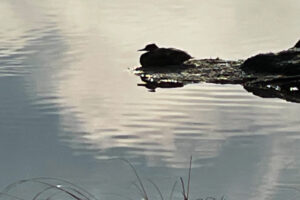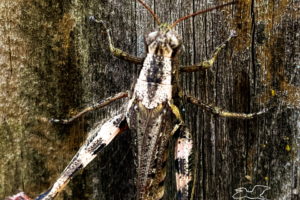Chipping Sparrows are Beautiful Little Migrants Through Florida

Every morning like clockwork I go out and put out seed to feed the “wild things” that live in this area. I get some squirrels, which I don’t mind, and quite a variety of birds. In the spring and the fall, I also get quite a few migrants. They may stay a few days and rest, or I may see them once (and I’m sure there are plenty I never see) and then never again. One of our winter residents (snow birds, literally!) that likes the feeders is the chipping sparrow. They are cute little birds that are in the same family as our full time residents, the house sparrow. And like the house sparrow, they eat a diet of mainly seeds and some insects.

Unlike the house sparrow that likes to live around people and buildings, the chipping sparrow likes to live in the woods. It likes forested areas with clearings and low brush. It is also often found in city parks and wooded yards. It is a ground feeder, just like the ground doves, but unlike the ground doves it likes tall trees, especially evergreens where it can perch and sing and look over it’s home territory. Chipping sparrows are common in much of the United States and range well up into Canada and down into Central America. Down here in Florida, they over winter, but do not breed. That’s one of the reasons I was really happy to get some photos of these chipping sparrows at my feeder in breeding plumage. When in breeding plumage, they sport the bright rufous cap and black eye stripe that they are so well known for. I’m sure they were headed further north for the season, but it was fun to watch and photograph them on the single afternoon that they were here.

Even though they don’t breed around here, the chipping sparrows have some pretty cool breeding behaviors. Both parents feed the young and care for them, but only the females build the nest. It takes her several days, and the male does bring her supplies. The nest is usually built in low branches in trees or shrubs. It’s made from twigs, plant roots and plant fibers and lined with leaves and hair. It tends to be pretty flimsy and often you can see through them! They can produce 3-4 broods per year, but they build a new nest for each one. It would be very cool to be able to observe some of their behaviors, but that is not in the cards for me, but many of you should be able to find these little birds and watch them throughout the summer months. Have any of you noticed chipping sparrows at your feeders or in your yard?





Recent Comments